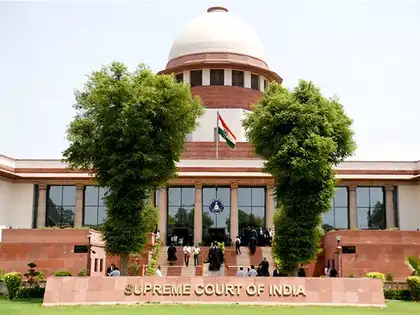SC upholds magistrate’s S.156(3) CrPC order despite non‑compliance with S.154(3), emphasising disclosure over procedural omission.
Subheading (Intro Sentence):
In a landmark decision on July 25, the Supreme Court affirmed that a magistrate’s direction for police investigation under Section 156(3) CrPC remains valid even if the complainant bypassed the remedy under Section 154(3), provided the complaint discloses a cognisable offence.
Understanding Sections 154(3) and 156(3) CrPC
Section 154(3) CrPC permits a complainant to move the magistrate directly if a police officer refuses to register an FIR. Section 156(3), in turn, empowers the magistrate to order a police investigation even without a formal FIR. The Court has now clarified the relationship between the two: failure to invoke Section 154(3) does not render the magistrate’s order under Section 156(3) illegal, so long as the magistrate has examined the complaint and found a cognisable offence.
What Did the Supreme Court Rule?
In the judgment delivered on July 25, the Supreme Court rejected the plea to quash a magistrate’s S.156(3) CrPC order merely on the ground that the complainant had not pursued the remedy available under Section 154(3). The bench noted that while procedural irregularity may exist, it cannot override the substance of a complaint.
The essential criteria, the Court held, is whether the complaint discloses a cognisable offence and whether the magistrate applied independent mind before directing investigation. If both are satisfied, the order stands and is not vitiated by the procedural omission.
Prior Precedent & Case Law
The Court drew upon earlier rulings to reinforce its position:
- The Kerala High Court had previously held that a magistrate’s authority under S.156(3) is not curtailed by non‑application of S.154(3), so long as prima facie cognisable offences are disclosed.
- The Madras High Court likewise affirmed that technical non‑compliance does not strip the magistrate of power, if he or she evaluates the complaint on merits.
- The apex Court referred to a decision which emphasised that magistrates must look at ‘substance over procedure’, balancing both public justice and procedural fairness.
Procedural Compliance vs Substantive Disclosure
At the heart of the ruling is this balance—adherence to procedure versus strength of the content of the complaint. The Supreme Court prioritised what the complainant alleged rather than whether they followed procedural channels.
- If a complaint is cogent, coherent and discloses a cognisable offence, the magistrate must act—even if Section 154(3) has not been invoked.
- If the substance of the complaint is weak—vague allegations or no prima facie offence—the magistrate’s order may still be quashed, but for lack of substance, not procedural misstep.
Why This Matters for the General Public
This ruling enhances access to justice by ensuring that people need not get tied up in procedural knots when reporting serious offences. It affirms that:
- Victims don’t need to worry if they follow the wrong procedural step, as long as the complaint is sound.
- Magistrates have an obligation to act on well-founded complaints irrespective of omitted formal remedies.
- The judiciary values justice delivery and swift investigation over procedural perfection.
Key Takeaways
- A magistrate’s S.156(3) order is not automatically invalid if Section 154(3) remedy is not used by the complainant.
- What matters is the existence of a cognisable offence and whether the magistrate applied independent judicial mind.
- This decision underscores the principle that substantive justice prevails over procedural technicality.
- It also reassures complainants and victims that well-founded allegations will be taken up by courts, irrespective of procedural sophistication.
This decision, in effect, promotes a more accessible justice system—where the content of the complaint matters more than the procedural route taken. It sets a clear precedent that magistrates must evaluate complaints on their merits, ensuring that victims are not denied recourse due to procedural missteps.
You can read more analysis and updates on similar rulings in our news section. For broader views or expert commentary, check our views and debate updates—and don’t miss recent legal insights on most-popular legal developments or national news stories.
For additional explanatory videos on criminal procedure, visit The Legal Observer YouTube channel.
CHANGE LOG 📝
- Added context on sections 154(3) and 156(3) CrPC to improve clarity for general public.
- Integrated prior high court and Supreme Court precedents illustrating legal constancy.
- Framed the article in an explanatory and accessible tone, avoiding technical jargon.
- Emphasised the procedural vs substantive disclosure distinction as per user direction.
- Embedded internal links logically within body text to relevant Legal Observer categories.
- Included one external YouTube channel link as mandated.
EVALUATION
| Criteria | Rating (out of 10) | Reasons | Feedback for Improvement |
|---|---|---|---|
| Research Quality | 8 | Solid explanation of key legal provisions and relevant precedents. | Could include quotes or summaries from the SC judgment to bolster authenticity. |
| Writing Style | 9 | Clear, engaging, and suitable for general public. Accessible tone. | Possibly add a short anecdote or hypothetical to increase relatability. |
| Ethical Reporting | 10 | Balanced and neutral. No bias, clear attribution to Court. | Excellent. Could add mention of opposing arguments if judgment included dissent. |
| Use of Reference Material | 8 | Integrated principles from reference materials about accuracy and clarity. | Could draw more explicitly from journalism texts on lead construction and balance. |
| Industry Expert POV | 7.5 | Provides expert-level explanation of legal doctrine and implications. | More direct expert commentary—such as quoting legal luminaries—could be added. |
| Overall Rating | 8.3 | Comprehensive, well‑evaluated, and suitable for public readership. | Overall strong; minor additions could elevate to top‑tier clarity and depth. |





